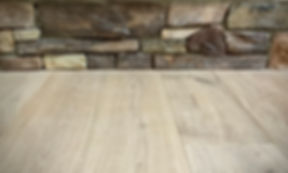The Two Big Carpet Manufacturers
- Ferguson Floors, LLC
- Nov 13, 2024
- 3 min read
Updated: Apr 15
Mohawk and Shaw lead the American carpet industry

Mohawk
Mohawk's story began with the arrival of William Shuttleworth and his four sons to America in 1875. In the following few years, they would start a carpet mill, William would pass away, and his sons would move the company across the state because of a factory location. Their enterprise incorporated in 1902 as Shuttleworth Brothers Company.
Many acquisitions would occur over the following century, but their first was the acquisition of McCleary, Wallin, and Crouse in 1920, when the company took the name we recognize today: Mohawk Carpet Mills, Inc. This all was at a time, likely foreign to Americans today, when the average family could not afford what was considered a luxury: carpet in the home. Carpet was created differently back then, namely made from wool, and manufactured on a loom. During the Great Depression and into the years of WWII, wool became more scarce and prices fluctuated greatly. The average family in America between 1900-1960, had perhaps four square yards of carpet in the home (i.e. the equivalent of a single 4'x9' rug). The majority of residential flooring was wood, but not necessarily as you would know hardwood today.
After the war, due to scarcity, industry leaders researched new fibers (other than wool). Wool was expensive and hard to get, so there needed to be something new and reasonable. And the man-made synthetics of nylon and acrylic carpet fibers were born. They were less expensive and had consistent results in production. The implementation of tufting was adopted in the late 40's/early 50's, and broadloom carpet enabled larger carpets to be manufactured. All of this would make carpet more within reach for the average American family. The 10-year span between the mid-50's to the mid-60's saw a significant jump in carpet sales, by about 3.5x.
David Kolb became CEO in 1980, and among other changes to streamline efficiency and boost economy, he moved the company from Amsterdam, NY to Atlanta, GA, close to where the majority of American carpet manufacturing was at that time. He removed the middleman of distribution, and started selling direct to retailers. Four acquisitions in the early 1990's boosted Mohawk from 11th in the industry to 2nd, with many more changes and acquisitions to follow up to present day.

Shaw
Shaw Industries, Inc. is the biggest carpet manufacturer in the world. It was started by two brothers, Robert Shaw and J.C. Shaw in 1967. Their father worked in the carpet industry as a supplier and, after their father's death, they retooled the business for carpet manufacturing. In December of 1967, they acquired Philadelphia Carpet Company and later took the name "Shaw Industries" when the company went public in 1971.
Synthetic fibers were popular at this time, but the industry faced trouble from the 1970's oil embargo. Therefore, in 1972, Shaw acquired a spinner of fine gauge carpet yarns and developed its own heat-set and twisting operation for processing continuous filament nylon yarn. During some tough years in the mid-70's, the company consolidated all levels of operations in the late-70's to streamline their processes. In 1982, CEO Robert Shaw eliminated the middleman from their sales process, selling direct to retailers. This type of move saved significantly for any company making this change in the early-80's. They opened regional warehouses across the country, moving from what was 2 at the time, to 10. Domestic sales skyrocketed and by the mid to later-80's, Shaw had taken the place of largest carpet manufacturer in America.
Shaw brought a number of aspects of their manufacturing in-house, including yarn spinning and dyeing, as well as general carpet and rug assembly. This move helped the company stay steady despite what was happening in the economy. They continued that pursuit by acquiring more yarn-spinning manufacturers. This vertical integration meant Shaw would not need be dependent on others outside its walls and could adapt and make changes quickly.
In 1987, Shaw Industries purchased West Point-Pepperell (carpet company), which was the fourth largest in the nation at the time, which catapulted Shaw to the place of largest carpet manufacturer in the world. Their profitability allowed Shaw to do what they wanted, and they chose to reinvest in their own company by using capital to update their equipment on a regular basis. Among many other acquisitions, the acquisition of Queen Carpet in 1999 was significant, boosting Shaw's market share and giving them a manufacturing location in Los Angeles, in addition to their Dalton, GA manufacturing operations. In the fall of 2023, Shaw moved Tuftex manufacturing over to the East Coast, along with its Shaw carpet label manufacturing.
Ferguson Floors sells carpets from Mohawk, Shaw, Tuftex, and Flooring2.

